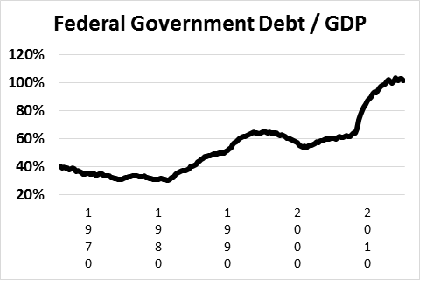
Yesterday, September 30, marked the end of the federal government’s fiscal year.
Why doesn’t the government use a calendar year? The current practice dates to 1974, when Congress passed the Budget and Impoundment Control Act. This legislation changed the fiscal year from the end of June to the end of September, providing for a new ‘transitional’ quarter.
The practice actually makes sense, in light of the timing of elections. Newly elected representatives and senators become responsible for a budget process, as opposed to inheriting a process put in train before their election. The mid-year fiscal-year practice was first instituted in the mid-1840s.
Going way back, in 1789, the government operated on a calendar year for its fiscal affairs. The government issued its first “fiscal report on the national debt” on January 1, 1791, reporting the debt to the penny -- $75,463,476.52. Yesterday’s ‘debt to the penny’ reported by the U.S. Treasury totaled over $18 trillion -- 240,000 times higher than in 1791.
Today’s dollars are not yesterday’s dollars, of course. Inflation matters, for one thing. More fundamentally, determining what a “dollar” is, yesterday or today, isn’t such an easy task (see this interesting article, for example). But it is certainly true that the national debt is a lot higher today than it was back then – in total as well as on a per-capita basis.
Over the course of the most recent fiscal year, the “debt to the penny” rose by over $275 billion – in just one year. And the amount officially reported pales compared to a “truer” total that would include Social Security and Medicare obligations. We estimate that total debt runs at least $80 trillion on that basis.
So, consider the fiscal year-end not only as a financial practice, but as a good time to reflect. Given that the current fiscal year-end practice dates to something called the “Budget and Impoundment Control Act,” passed in 1974, how well has our government actually controlled its budgets since then?
The chart below shows the ratio of officially reported federal debt to GDP since 1966. Beginning in 1980, this ratio embarked on a long train ride North. Hopefully, we won’t run off the tracks, and end up in a permanent state of January.


